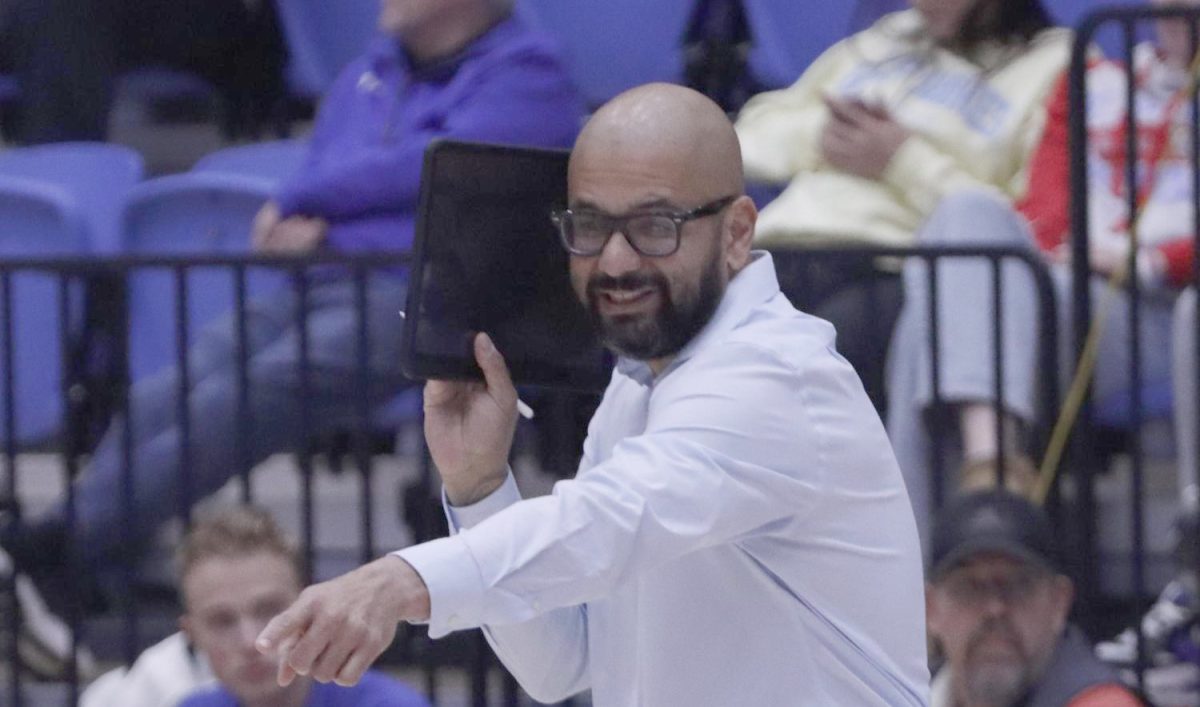Fire to burn in south quad
Imagine two dorm rooms, nearly identical.
Both contain a bed, dresser, desk, computer and TV. The only difference – the first has been retrofitted with a sprinkler system and the second has not.
Now imagine fire breaks out in each.
Within a few minutes, the fire in the first room is suppressed, property damage is minimal and no one is harmed.
The fire in the second room, however, continues to burn and spreads to other rooms. Lives, as well as thousands of dollars of property, are lost forever.
The Charleston Fire Department, in co-operation with the Office of Environmental Health and Safety, will provide a real life glimpse of this scene when they conduct a simulation at 2 p.m. today in the South Quad.
“Our goal with this is to show how quickly a fire will be suppressed, or held in check, until fire fighters can get on scene, and how little property damage is incurred by the student when the sprinkler systems put out the fire,” said Captain James Calvert, of the Charleston Fire Department.
He said two 8 feet by 8 feet by 8 feet dorm room props have been prepared for the event.
“We’re going to light a fire in the trashcan in each room simultaneously and allow the fire to build and progress,” Calvert said.
Calvert hopes to educate students and limit some of the misconceptions about sprinkler systems.
“A lot of people see in movies, when a sprinkler activates, every head in the building activates too,” he said. “Well, that’s not the case. When a sprinkler head goes off, its only in the area where there was enough heat to cause it to do so.”
According to Eastern Safety Officer Gary Hanebrink, the university began installing sprinklers in 1996, and is continuing to do so.
“This was prior to the state mandate that requires sprinkler systems on all campuses,” he said. “We were progressive in that way.”
Pemberton Hall, University Court and Greek Court had sprinkler systems prior to requirements, and since then, sprinkler systems have been installed in all the major high-rises on campus.
“If you live on campus, you will probably have room with a sprinkler system in it,” Hanebrink said. “Seventy-five percent of our residential buildings have sprinkler systems.”
By 2013, all residence halls on campus will have a sprinkler system, Hanebrink said.
Eastern’s residence halls have not always been so safe.
In 1993, before the sprinkler mandate, a fire broke out in Carman Hall, which wiped out an entire floor and displaced 60 residents.
Also, in the mid-1970s, there was a fire in a basement off campus and several students lost their lives.
Last year, an incident arose in University Court, in which a resident was not awakened until the sprinkler in their room went off and contained the fire, Hanebrink said.
The Charleston Fire Department encourages members of Eastern’s faculty and staff, as well as members of the Charleston community, to attend the simulation.
The fire department, the American Red Cross, the Coles County Health Department, Coles County Campus-Community Emercency Response Team, Eastern Health Services, and Coles County Emergency Communications will all be on hand to distribute free preventative literature and to lead other educational activities to kick off Fire Awareness and Emergency Preparedness Month.
Jason Hardimon can be reached at 581-7492 or DENnewsdesk@gmail.com.


















![[Thumbnail Edition] Senior Foward Macy McGlone, getsw the ball and gets the point during the first half of the game aginst Western Illinois University,, Eastern Illinois University Lost to Western Illinois University Thursday March 6 20205, 78-75 EIU lost making it the end of their season](https://www.dailyeasternnews.com/wp-content/uploads/2025/03/WBB_OVC_03_O-1-e1743361637111-1200x614.jpg)




















































